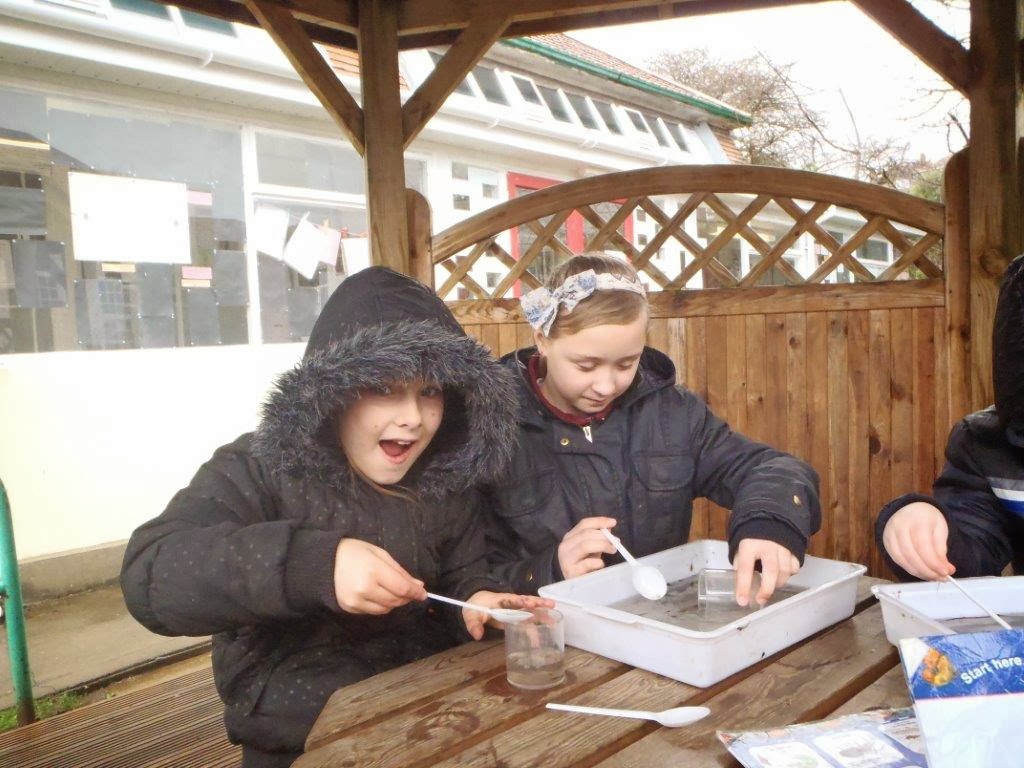Year 5 at Milton Park Primary have been busy offering guided tours to their wonderful trout tank to the rest of their school as their eggs start to develop!
Whilst they have been busy learning all about the life cycles of trout, 54 students from year 5 investigated their own little area of freshwater yesterday in their school grounds.
 |
| Damselfly Nymphs found in the pond |
Leader of the school’s Gardening
Club, Miss Crookes, asked some builders who were working in the school a couple
of years ago, whether they would be willing to dig a hole for a pond. They did, and the gardening club created a
small but very wildlife-friendly pond.
We weren’t sure what we would find yesterday, because January is still
very early in the season and the water was cold, but it was fantastic to find
plenty of freshwater hoglice, several types of damselfly nymphs and some midge
pupae. It will be interesting to see how
the pondlife develops over the coming months…
Meanwhile, back in the tank
indoors, the trout eggs are now ‘eyed’ and the first one hatched
yesterday. The temperature is a nice
cool 9 degrees, so progress is slow but steady.

Well done Year 5 and everyone at Milton Park, we can't wait to see how the brown trout develop.






